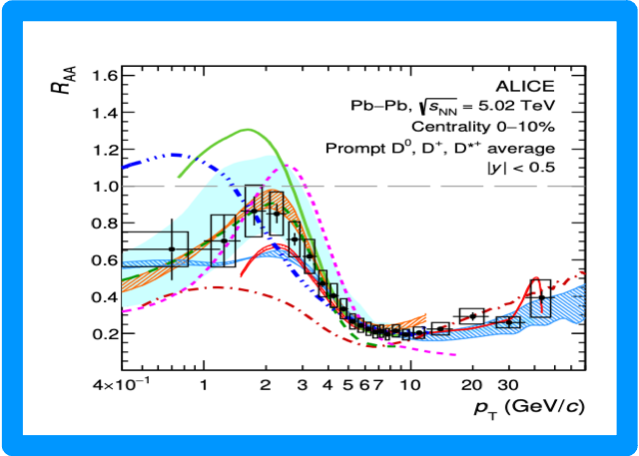
Precision measurements of prompt D0, D+, and D*+ production in heavy-ion collisions are fundamental to constrain the properties of the QGP. In particular, the measurements performed with the data sample of Pb-Pb collisions at 5.02 TeV collected with the ALICE detector in 2018, provided a more precise determination of the D-meson pT distributions, and allowed for the first time the measurement of the D0-meson yield down to pT=0 in Pb-Pb collisions at LHC, hence providing access for the first time to the D0 pT-integrated yield in central and semicentral Pb-Pb collisions. The results were compared with different theoretical models inquiring the role of collisional and radiative energy loss in the interaction of charm quark with the medium as well as of recombination in addition to fragmentation in the hadronization of charm quarks into charm hadrons.
It was possible to constrain the spatial diffusion coefficient of charm quarks via a quantitative comparison (i.e. χ2 analysis) of the nuclear modification factor RAA) and elliptic (v2) and triangular (v3) flow coefficients with theoretical models implementing charm-quark transport in the QGP, as shown in the figures. The extracted range for the spatial diffusion coefficient is 1.5 < 2πDs Tc < 4.5 at the pseudocritical temperature Tc = 155 MeV and it is substantially narrower with respect to previous publications.
Figure shows nuclear modification factor and elliptic flow coefficient as a function of pT measured in the 0-10% and 30-50% centrality class respectively and compared with theoretical model predictions implementing charm-quark transport in the QGP.
Further reading:
ALICE collaboration, arXiv:2110.09420
